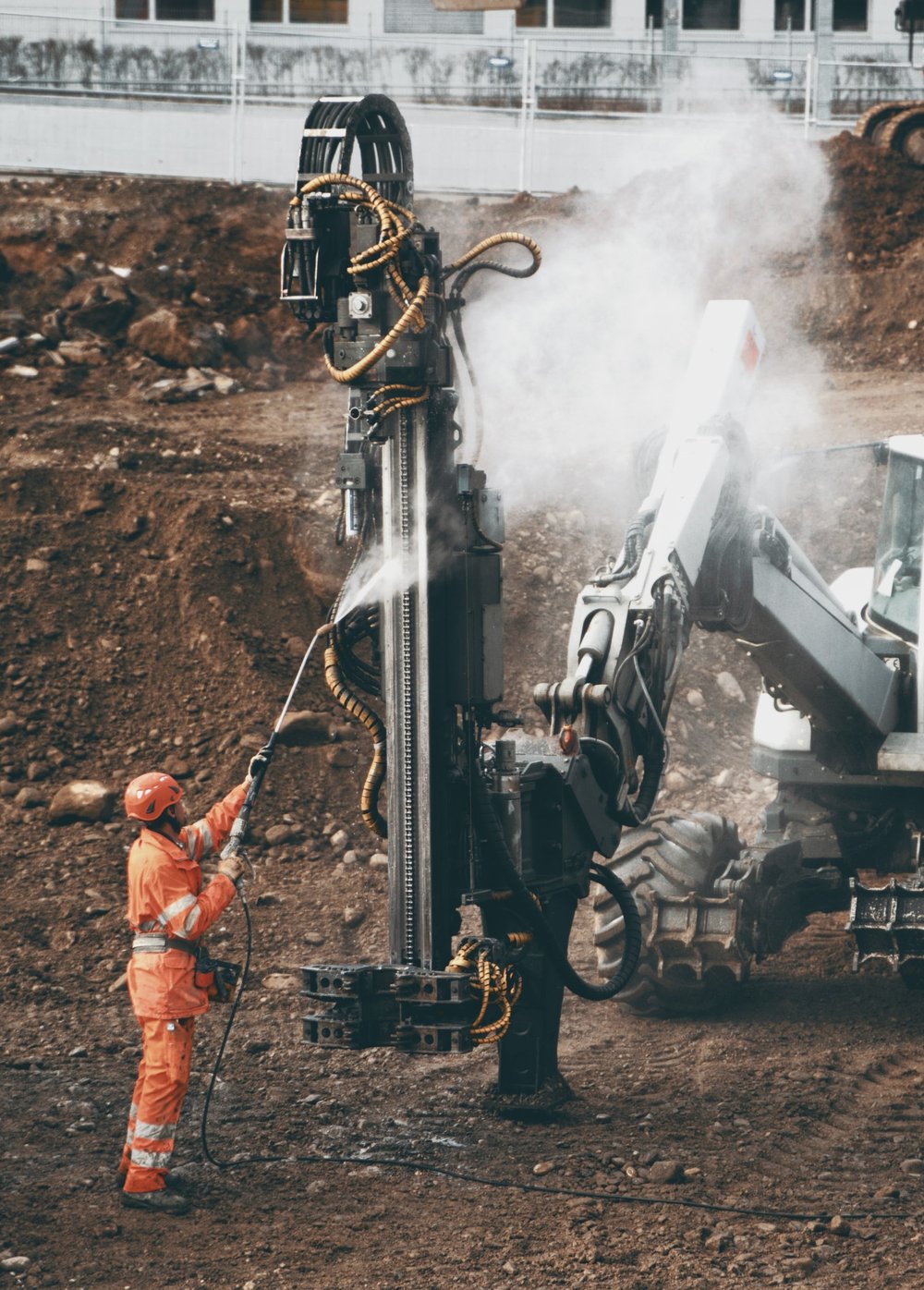The Impact Of Technology On People And The Planet (& How To Mitigate It)

The Impact Of Technology On People And The Planet
Nowadays, our society is so dependent on technology that it is hard to believe that the telephone was only invented in 1876. 146 years later, we spend most of our days using technology, and almost all of us can affirm that we could not live without it.
The crazy thing is that there are now more active mobile connections than people on the planet, and more than half of the world’s population is connected to the Internet!
All these high-tech devices, electric appliances and gadgets are making our lives easier and more convenient. They help us contact people, work, research, cook, clean, and entertain, among many other things.
Modern technology is even helping us combat climate change! But, does it mean it is sustainable?
In this article, you will learn all about the environmental and social footprint of our tech addiction, as well as how you, as a consumer, can mitigate it and make using technology more eco-friendly.

How technology is destroying our planet
All our high-tech gadgets have consequences on our planet at different stages in the supply chain.
Mining for rare minerals
Every device we own is made with plenty of rare components, including rare earth elements and tech metals, like cobalt, lithium and tantalum. Electronics also contain other materials such as plastic, which is derived from fossil fuels, iron, aluminum, zinc, lead, copper and tin to name just a few.
The main issue regarding all those materials is that to be extracted from the ground, they need to be mined, which causes severe threats to the environment.
Mining is a very water and energy-intensive activity that leads to deforestation as well as water, soil and air pollution. It releases huge quantities of carbon dioxide and carbon monoxide into the air, thus massively contributing to global warming.
To extract precious metals from the Earth, we need to use colossal machines that usually run on fossil fuels. Mining also comes with serious landscape degradation: the mines are often so big that we can see them from space!
Another thing we rarely think about regarding the dangers of extracting rare earth elements from the ground is that the mines and processing plants generate a lot of toxic and radioactive waste, which often ends up in the environment.
Plus, extracting so many metals and elements from the Earth contributes to the rapid depletion of natural resources. The situation is even more critical because some of those materials are rare, meaning that if we continue extracting them at such a rate, we will quickly run out of them at some point in the future.
It is also interesting to note that most of those materials are mined in developing countries where there is weak environmental regulation, like in China. Therefore, there are few to no incentives for companies to make the process less damaging to the environment.
There are many examples illustrating the disastrous effects mining for precious metals and elements has on the planet!
In the Atacama desert in Chile, lithium extraction has a huge impact on the water reserves in the region, which is already one of the driest on Earth. The groundwater table is sinking and drying out, and the mining process can contaminate drinking water.
And here is another striking example. In the Chinese region of Inner Mongolia, there is an artificial lake created because of our worldwide addiction to high-tech gadgets. With a diameter of 5.5 miles, this lake is extremely toxic and entirely made of dangerous chemicals and black sludge, which are waste byproducts of rare earth mining.
Those two examples are just the tip of the iceberg and illustrate only a few aspects of the environmental footprint of mining for metals and rare earth elements.
The unsustainable production of technology
The impact our tech gadgets have on our planet does not end with the extraction of rare resources. The process that turns raw materials into a finished product is very unsustainable too.
Suppliers all around the world use raw materials, like gold or cobalt, to create small components. The individual parts are then sent to factories where they are assembled into finished products, such as laptops or phones. After that, the brand new devices are shipped to warehouses in different countries, and finally, to retailers on all continents.
The supply chain of our electronics is complex: our devices are made with hundreds of components from all over the world. For example, to manufacture its iPhones, Apple works with suppliers in 43 countries on six continents.
The issue is that transporting all those products and components generates a lot of greenhouse gas emissions, and thus contributes to the climate crisis.
Producing the products itself is also very energy-intensive and a source of air and water pollution near the factories.
We should also mention that the Internet has an environmental footprint as well! The Internet is powered by a variety of physical infrastructures, such as data centers and transmission networks.
It means that transferring and storing our data online comes with its own impact on the planet. For instance, data centers consume an enormous amount of electricity, 80% of which is made using fossil fuels.
It is even estimated that browsing the Internet for less than 15 minutes generates as many CO2 emissions as driving a car over a distance of 1km. This is mind-blowing!
Electronic waste
Our appliances, high-tech devices and gadgets also cause significant environmental problems at the end of their lives. According to the United Nations, 53.6 million tons of electronic waste (or e-waste) were discarded worldwide in 2019, and this number should reach 74 million tons by 2030.
In fact, e-waste is the fastest-growing domestic waste stream, and it is mainly due to the world’s skyrocketing consumption of electronics as well as planned obsolescence.
Out of those 54 million tons of discarded electronics, only 17.4% were collected and recycled. When we think about it, it means that most metals and rare elements that went into the making of those products were burned or discarded in a landfill.
So a huge amount of precious natural resources, which by the way are worth billions of dollars, is going to waste even though they could be reused!
And what may be even worse is that e-waste contains hazardous chemicals and toxic substances, including heavy metals and flame retardants, that can leach into the soil when discarded in landfills.
As a result, the underlying groundwater and crops that may be planted in the soil can get contaminated. Not to mention that those pollutants usually remain there for a long time, and some might even become more toxic as time goes by!
Also, in 2019, between 3.75 and 10.72 million tons of e-waste were shipped to developing countries. So not only are the environmental issues exported there but transporting them far away also has a significant carbon footprint.
In those countries, electronic waste is usually dismantled, burned and shredded, which releases large amounts of dust and toxic particles into the environment. It leaves hazardous byproducts in the air, soil and water, and impacts entire ecosystems.

The impact of technology on people
The production of our electronics is also very dangerous to the people working in that industry as they are constantly risking their health and safety.
Workers mining for rare metals for our electronics work in extremely hard and unsafe conditions, and in a very hot environment. Mines pay them very poorly for very long days, and often do not provide them with any health and safety protections, like gloves or face masks.
Workers regularly suffer from respiratory problems and diseases such as tuberculosis, silicosis, bronchitis and lung cancer. Being in constant contact with toxic metals can also cause leukemia and several other types of cancer.
What’s more, human rights violations are far from uncommon, and child labor is regularly used in the mining sector. For instance, it is estimated that 40,000 children are working in cobalt mines in the Democratic Republic of Congo, often extracting the metal by hand.
Plus, the extraction of rare metals in the DRC, such as gold, tin, tungsten and tantalum, also known as "conflict minerals'', has been fueling war and benefiting armed groups in the country. Miners are often beaten by soldiers and forced to work in unstable mines, which have already killed hundreds of people when some of them collapsed.
Local populations living near the mines are also affected by the extraction of minerals from the Earth. Since mining for rare earth elements creates a lot of toxic and radioactive waste that often ends up in nature, workers and nearby residents are regularly exposed to harmful chemicals and radiation that are not without consequences for human health.
In the Chinese city of Baotou, in Inner Mongolia, rare earth mining poisoned several villages and farms, forcing thousands of people to leave the area!
People and workers are also affected by our modern technology at the other end of the supply chain. As we saw earlier, around one-fifth of e-waste generated worldwide gets recycled.
While some recycling facilities act responsibly and provide their workers with protection, many others do not, putting their workers’ lives and health at risk. Those workers are exposed to dangerous chemicals and toxins that are leaching out of discarded electronics, which can cause a wide range of health problems.
And as mentioned before, when e-waste is dismantled and burned, a significant amount of toxic particles is released into the air, soil and water. It means that the communities living nearby are also affected by how polluting e-waste is!

How planned obsolescence is making it all worse
All the negative impacts technology has on people and the environment make it one of the least sustainable things we can buy as consumers.
But as if that were not enough, almost all tech companies are using a powerful tool to make things even worse: planned obsolescence.
Planned obsolescence is a business strategy that consists in intentionally creating products that will become out of date or unusable after a certain time. For instance, companies can design products that will stop functioning properly after a given period, or launch a new, better model of the product to encourage people to choose the upgraded version.
In the tech industry, companies are purposefully producing their products using components that begin to wear down fairly quickly and are making it hard to repair them.
They also use new operating systems that quickly become less and less compatible with the device we already have. Not to mention that most tech brands launch new, better (as promised) models every single year!
This strategy promotes hyper-consumerism and guarantees that consumers will keep buying new replacements for their products, thus contributing to a high demand. And when the demand is high, companies make large profits.
Mainly because of planned (and perceived) obsolescence, people in the United States and Europe have been replacing their electronic devices like smartphones every two years on average.
It means that all those precious resources were mined, made into small parts, which were then assembled into brand new devices, that were finally shipped all across the world to be used for only two years!
When we are replacing our electronics that often, we are also contributing even more to the environmental damage and social impacts than if we bought new devices less frequently. We are creating a demand to extract even more resources and generating more e-waste.
Planned obsolescence is thus considerably increasing the environmental footprint and social costs of technology, making it even more unsustainable!

How can we make using tech more sustainable?
Now that you have learned about how harmful our modern technology can be to the planet and human beings, you probably want to help minimize its impact.
Fortunately, even as consumers, there are some easy things we can do in our everyday lives to mitigate the environmental and social footprint of electronics.
The first and maybe the most important thing you can do is to keep your tech gadgets and devices for as long as possible, and not upgrade them regularly if possible. Doing so will make sure that you are not creating a demand for new tech to be made and discarding fewer electronics, thus producing less e-waste.
To be able to keep your devices for a long time, try to take good care of them and be careful not to drop them. It may also be a great idea to invest in a sturdy phone case to protect your phone and to get yourself a good quality laptop sleeve for when you are on the go with your computer.
Whenever you need a new device, consider getting it second-hand instead of new. There are countless stores selling reconditioned tech, but you can also look for electronics on Facebook Marketplace, eBay, or similar websites.
And then, when your electronics stop working, see if you can get them fixed before replacing them. But if nothing can be done, remember to never put them in the trash and always try to find places that recycle tech.
Manufacturers usually offer to take them back, but the easiest way to go is to check if a tech or hardware store nearby has a recycling bin for electronics. For instance, in the United States, Staples and Best Buy usually take back your broken gadgets to recycle them. Your local recycling center may also accept tech, but you can always find a recycler near you on this website.
To make tech more sustainable, you can also sell or donate any unused devices to give them a new life, and invest in rechargeable batteries to avoid having to constantly buy and discard single-use ones.
Finally, to reduce the environmental footprint of the Internet, delete unnecessary emails from your inbox or unused files on your cloud, unsubscribe from newsletters that you do not read, and avoid streaming videos mindlessly if you can do something else instead.

Final thoughts
At every stage of the supply chain, technology comes with a massive environmental and social footprint. The world’s hyperconsumption of gadgets and devices is slowly destroying our planet and harming many people.
Big tech companies are clearly the ones who should, before anyone else, strive to make things more sustainable, but we also lack solid governmental regulation that would oblige them to make some positive changes.
However, as consumers, it does not mean we should say “game over” and ignore those issues. There are many things we can do to mitigate the environmental and social impact of our devices, and applying these tips also usually makes us save a lot of money. Win-win!

About the Author:
Eva Astoul is a French freelance writer, specializing in content related to sustainability, simple living, and a growth-focused healthy lifestyle.
She runs her own blog, Green With Less, to inspire people to live a more minimalist and sustainable life.
MAKE SURE TO PIN THE PHOTO BELOW TO SAVE THIS POST FOR LATER!

WANT to find SUSTAINABLE BRANDS? VISIT OUR BRAND DIRECTORY!
Our Brand Directory is home to hundreds of sustainable brands, from makeup to cleaning supplies, from underwear to shoes. We have broken everything down by category for easy shopping, along with discount codes unique to Sustainably Chic viewers.
Shop the Sustainable Brand DirectoryRELATED READING YOU MAY ALSO ENJOY:
#Content-Attribution#
Content Creator: Eva Astoul
Date:
